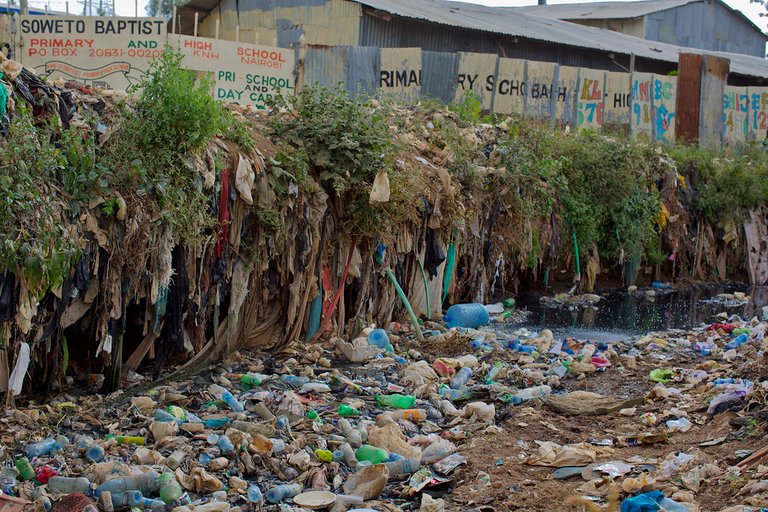Micro and Nano Plastic : You are More Plastic Than You Think
The Television knows how to bring a lot of things to your attention just like the case of plastics. In the last few days, I have been seeing news on plastics and oceans and I just wonder why people will not stop producing something they cannot manage but then I remember that those who are producing the plastic without proper measures of disposal are humans, those who utilize the plastics are humans, and those who dispose them improperly are also humans but when we humans do these things, all organisms and the ecosystem suffers but what about ourselves? We also suffer from it.
We have thousands or millions of microplastics in our body with some flowing in the blood and other handing or stuck to different organs in the body. In our world today, there are even high chances that people have microplastics from the day they were born. It is not like we have known about microplastics years ago, its discovery is very recent with its first published article being 2019. These plastics are about 5mm or less in size, something smaller than a grain of rice which is about 6mm on average. This plastics can be about the size of a strand of hair while some can be so small up to 1micrometer and they are known as nanoplastics almost the size of a bacteria.
We then ask ourselves how we have these plastics, but then the answer is not far from us at all since plastic is in almost everything around us and everywhere around us. Okay, mention one place that you go to daily and you do not find plastics? You would say nowhere and that's because it is the truth. Plastic is made from Naptha which an oil which is a moderately dense hydrocarbon gotten from crude oil. The oil is less dense than kerosene but more dense than petroleum motor spirit (what you refer to as gasoline or petrol depending on your region). It is just a mixture of hydrocarbon as it has no actual molecule.
The molecule mixtures are usually ethylene, propylene, vinyl chloride and so on are used to make plastics. These molecules are combined to become poly like polyethylene, polyvinyl chloride and so on. Polyethylene (plastic bags, food containers, and bottles), Polypropylene (Car exteriors like bumpers, Yogurt containers and those cups you use to get hot beverages), and Polyvinyl chloride (PVC pipes, PVC roof sheets, Wire covering) are the most common industrial plastics. There is also a common one which is found in new gadgets which is polystyrene (for Styrofoam).
https://woodsidepawprint.com/wp-content/uploads/2024/04/plastic-ocean-2.webp
woodsidepawprint
Plastics are not organic, so they cannot be digested by bacteria and fungi easily so when we dispose this plastics, they end up being broken into smaller particles by natures activity including humans intentionally breaking them down. These plastics become microplastics and they are transferred from one place to another via water, air, organisms, and even humans.
Microplastics get into the body via two routes, Ingestion and inhalation. The ingestion aspect is quite explanatory and this also includes eating and drinking from the plastic itself. Inhalation can be from Tyre residues when driving, cloths, and so on but then what happens when these plastics get into the body?
Two things; Trapped or Excreted. They are either excreted with body waste or they are trapped in Tissues and Organs including the hair, saliva, sputum, lungs, broncho alveolar lavage fluid, liver, breast tissues and breast milk, placenta, spleen, kidney, colon, the blood and so on. Currently it is still new and there is no surgical procedure to remove microplastics and the body cannot digest them so they are either removed via excretion, or they find a home in our body.
Currently microplastics are even found in plants and they do not have a way of breaking down the plastic and so they end up in other plant eating organisms. Currently we do not have a definitive answer to what effect microplastics have on our health asides for a few research that are still linking it to cell damage but the researchers still have a lot to do to make it clear but we cannot be say that there is a hunch that if it is not quickly sorted, it could become a big problem for us in the future.
Reference
https://www.aamc.org/news/microplastics-are-inside-us-all-what-does-mean-our-health
https://pubs.acs.org/doi/10.1021/envhealth.3c00052
https://www.ncbi.nlm.nih.gov/pmc/articles/PMC10151227/
https://www.plasticsforchange.org/blog/different-types-of-plastic
https://www.nationalgeographic.com/environment/article/microplastics-are-in-our-bodies-how-much-do-they-harm-us
https://www.frontiersin.org/journals/plant-science/articles/10.3389/fpls.2023.1226484/full
https://www.ncbi.nlm.nih.gov/pmc/articles/PMC8618759/


Sending Love and Ecency Vote!

Thanks for your contribution to the STEMsocial community. Feel free to join us on discord to get to know the rest of us!
Please consider delegating to the @stemsocial account (85% of the curation rewards are returned).
Thanks for including @stemsocial as a beneficiary, which gives you stronger support.